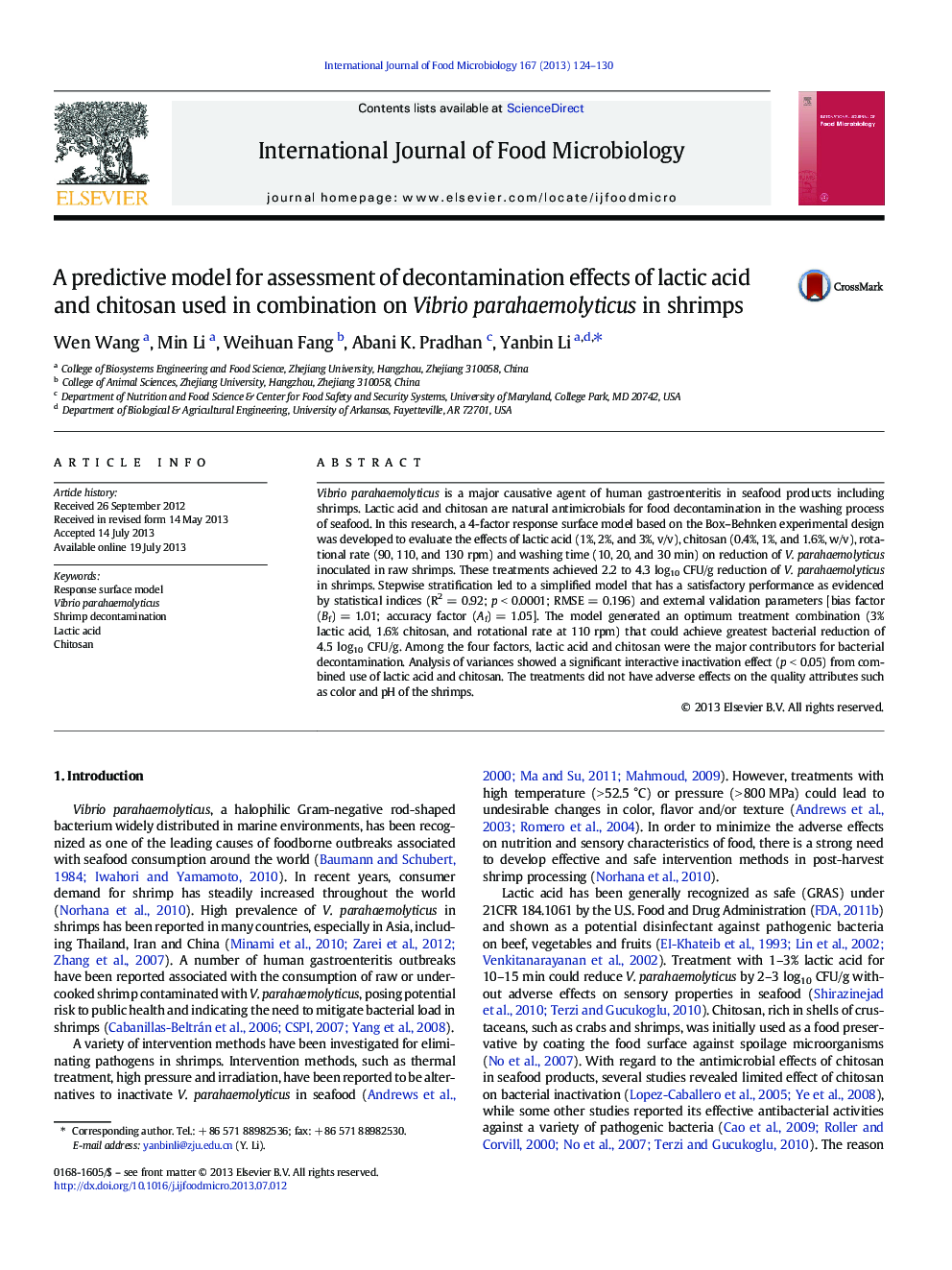| Article ID | Journal | Published Year | Pages | File Type |
|---|---|---|---|---|
| 4367115 | International Journal of Food Microbiology | 2013 | 7 Pages |
•Lactic acid and chitosan were used to reduce V. parahaemolyticus in shrimps.•Combined use of lactic acid and chitosan inactivated the pathogen more effectively.•A response surface model was developed for predicting the bacterial reduction.•No adverse effect was observed on the quality of treated shrimps.
Vibrio parahaemolyticus is a major causative agent of human gastroenteritis in seafood products including shrimps. Lactic acid and chitosan are natural antimicrobials for food decontamination in the washing process of seafood. In this research, a 4-factor response surface model based on the Box–Behnken experimental design was developed to evaluate the effects of lactic acid (1%, 2%, and 3%, v/v), chitosan (0.4%, 1%, and 1.6%, w/v), rotational rate (90, 110, and 130 rpm) and washing time (10, 20, and 30 min) on reduction of V. parahaemolyticus inoculated in raw shrimps. These treatments achieved 2.2 to 4.3 log10 CFU/g reduction of V. parahaemolyticus in shrimps. Stepwise stratification led to a simplified model that has a satisfactory performance as evidenced by statistical indices (R2 = 0.92; p < 0.0001; RMSE = 0.196) and external validation parameters [bias factor (Bf) = 1.01; accuracy factor (Af) = 1.05]. The model generated an optimum treatment combination (3% lactic acid, 1.6% chitosan, and rotational rate at 110 rpm) that could achieve greatest bacterial reduction of 4.5 log10 CFU/g. Among the four factors, lactic acid and chitosan were the major contributors for bacterial decontamination. Analysis of variances showed a significant interactive inactivation effect (p < 0.05) from combined use of lactic acid and chitosan. The treatments did not have adverse effects on the quality attributes such as color and pH of the shrimps.
